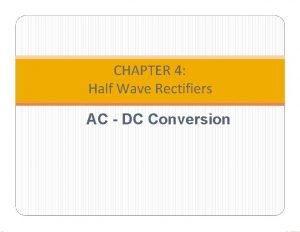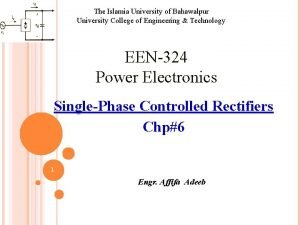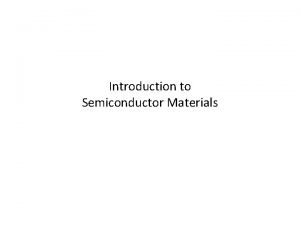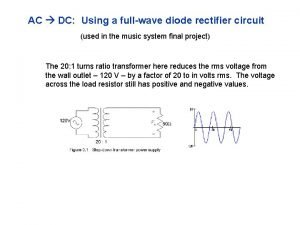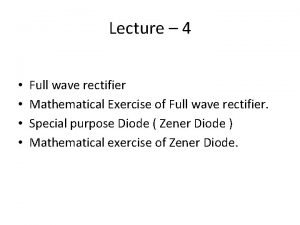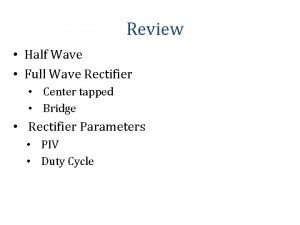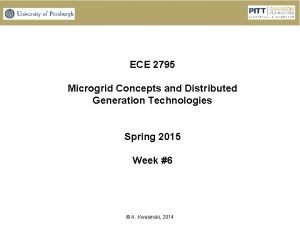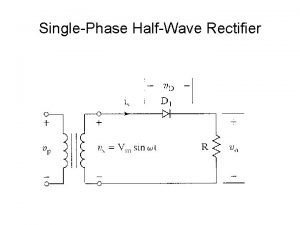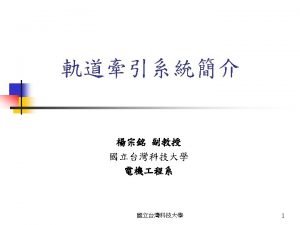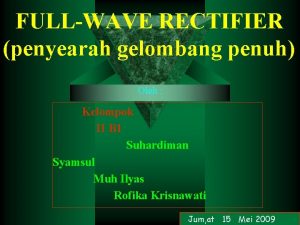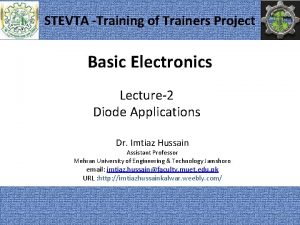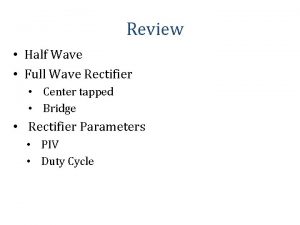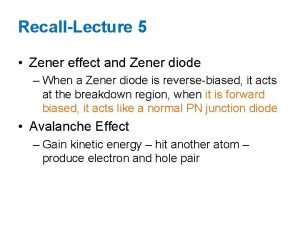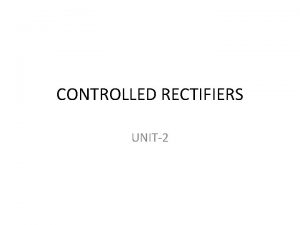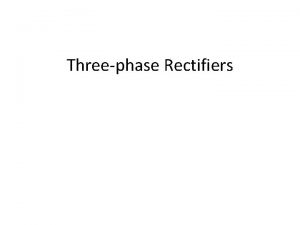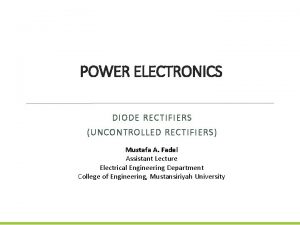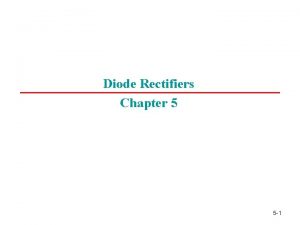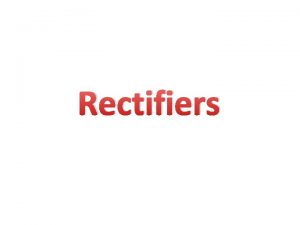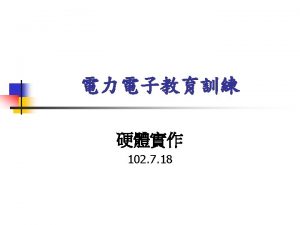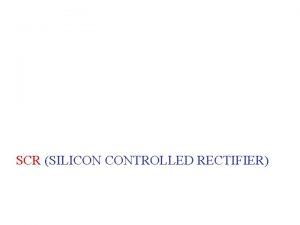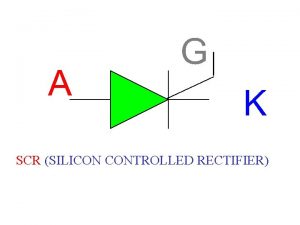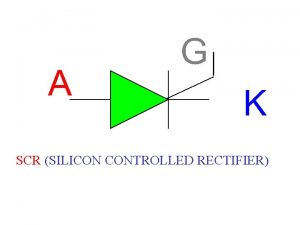Silicon Controlled Rectifiers Silicon Controlled Rectifier A Silicon


















- Slides: 18

Silicon Controlled Rectifiers

Silicon Controlled Rectifier • A Silicon Controlled Rectifier (or Semiconductor Controlled Rectifier) is a four layer solid state device that controls current flow • The name “silicon controlled rectifier” is a trade name for the type of thyristor commercialized at General Electric in 1957

Silicon Controlled Rectifier • An SCR can be seen as a conventional rectifier controlled by a gate signal • It is a 4 -layered 3 -terminal device • When the gate to cathode voltage exceeds a certain threshold, the device turns 'on' and conducts current

Silicon Controlled Rectifier • The operation of a SCR can be understood in terms of a pair of tightly coupled Bipolar Junction Transistors • SCR has three states: – Reverse blocking mode, forward blocking mode, and forward conducting mode


V-I Characteristic Curve

Silicon Controlled Rectifier • Industrially SCRs are applied to produce DC voltages for motors from AC line voltage • Rectifier – Half-wave rectifier, full-wave rectifier

Half-wave rectifier

Half-wave rectifier

Half-wave rectifier

Reviews • A SCR is essentially a diode with an extra terminal added • This extra terminal is called the gate, and it is used to trigger the device into conduction by the application of a small voltage

Application: DC Motor Driver • DC motor speed generally depends on a combination of the voltage and current flowing in the motor coils and the motor loads or braking torque • The speed of the motor is proportional to the voltage, and the torque is proportional to the current

DC Motors Current Driver • A rectifier is one or more diodes arranged for converting AC to DC • The current used to drive the DC motor typically comes from : Fixed voltage: – Battery – Voltage regulator Adjustable voltage: – PWM current source – Silicon controlled rectifier modulated AC source

DC Motors Current Drives • Voltage regulator

DC Motors Current Drives • Linear power transistor & OP amp

DC Motors Current Drives • Pulse Width Modulation

DC Motors Current Drives

DC Motors Current Drives
 Single phase half wave uncontrolled rectifier with rle load
Single phase half wave uncontrolled rectifier with rle load Define half wave rectifier
Define half wave rectifier Peak output voltage
Peak output voltage Full wave controlled bridge rectifier
Full wave controlled bridge rectifier Use of half wave rectifier in daily life
Use of half wave rectifier in daily life Vload
Vload Ac dc diode rectifier
Ac dc diode rectifier Advantage of full wave rectifier
Advantage of full wave rectifier Center tapped full wave rectifier with capacitor filter
Center tapped full wave rectifier with capacitor filter Rectifier power electronics
Rectifier power electronics Single phase half wave rectifier
Single phase half wave rectifier Readhesion
Readhesion Kelemahan fullwave
Kelemahan fullwave Ttnt waveform
Ttnt waveform Half wave rectifier vrms
Half wave rectifier vrms Full wave rectifier center tapped
Full wave rectifier center tapped P-n junction diode as half wave rectifier
P-n junction diode as half wave rectifier Single event burnout
Single event burnout Difference between full wave and half wave rectifier
Difference between full wave and half wave rectifier
